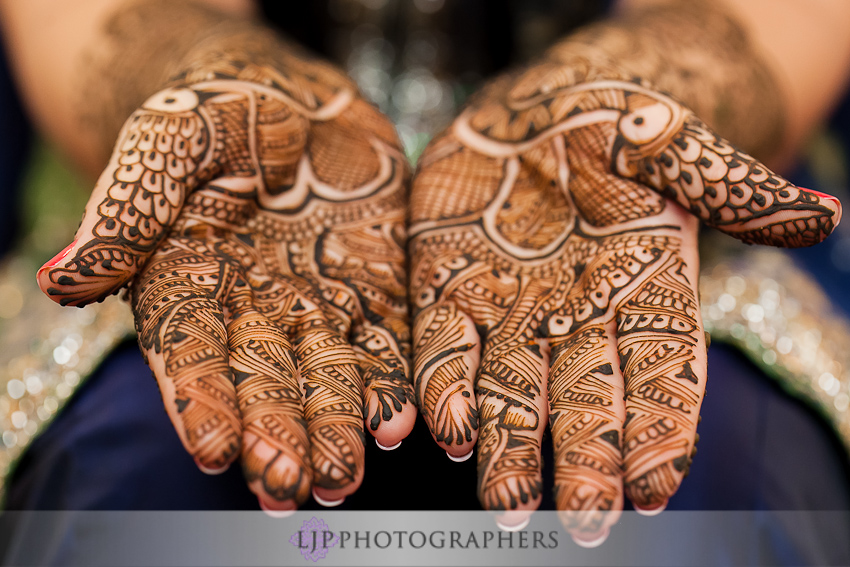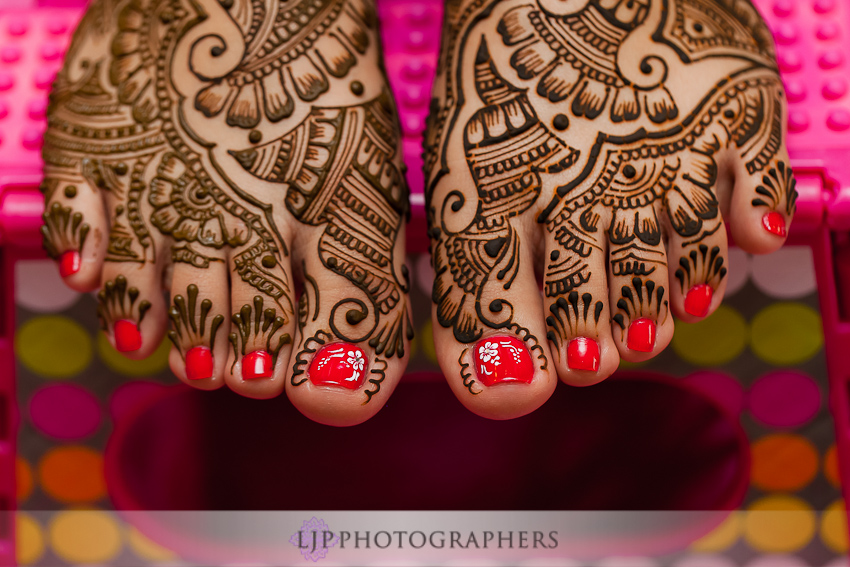Significance of Mehndi in Indian Wedding

In this article, we will discuss the Significance of Mehndi in Indian Wedding.
Remember the song, “Mehndi laga ke rakhna, doli saja ke rakhna, lene tujhe oh gori, aayenge tere sajna” from the Shahrukh-Kajol Hit movie DDLJ?

The role of Mehndi is huge when it comes to Indian marriages. Apart from enhancing the look of the bride, it offers healing purposes. Be it the bride or the families, everyone relishes the art of henna design and love adorning their hands with different abstract henna design patterns. Many Indian weddings include mehndi and Sangeet ceremony making the whole wedding a grand affair.
Did you know that Mehndi is considered one of the oldest form of body art that has been imparted right from the Vedic ages? The word ‘Mehndi’ comes from the Sanskrit word, “mendhika”, which means the henna plant itself. There are also evidences that henna was used in the mummification process in Egypt. It is even believed that the gorgeous princess Cleopatra used henna to paint her body.
Remember the song, “Mehndi laga ke rakhna, doli saja ke rakhna, lene tujhe oh gori, aayenge tere sajna” from the Shahrukh-Kajol Hit movie DDLJ?

The role of Mehndi is huge when it comes to Indian marriages. Apart from enhancing the look of the bride, it offers healing purposes. Be it the bride or the families, everyone relishes the art of henna design and love adorning their hands with different abstract henna design patterns. Many Indian weddings include mehndi and Sangeet ceremony making the whole wedding a grand affair.
Did you know that Mehndi is considered one of the oldest form of body art that has been imparted right from the Vedic ages? The word ‘Mehndi’ comes from the Sanskrit word, “mendhika”, which means the henna plant itself. There are also evidences that henna was used in the mummification process in Egypt. It is even believed that the gorgeous princess Cleopatra used henna to paint her body.
Traditional Rituals
Applying Mehndi to the bride and the groom before the wedding is one of the oldest Indian traditions that is still followed even today. The ceremony includes applying mehndi designs on the bride’s hand and feet. Applying mehndi is one of the “Solah Sringars” of the bride-to-be. However, applying henna designs for the groom is simply a mark of good omen.
Apart from Hindu weddings, Islamic Weddings also include Mehndi patterns such as Arabic henna designs. As per Islamic literature, Prophet Muhammad used to apply Mehndi to dye his beard and used it to nurse sick people.
Coming back to weddings, Mehndi ceremony is an important pre-wedding ritual and is not only observed in India but also in many Arabic regions.
Significance of Mehndi

The significance of Mehndi in traditional Indian marriage represents the holy bond of matrimony. It is also considered a Shagun (a sign of good luck). It also signifies the love and affection between the couple and their families. Following are some of the popular beliefs associated with Mehndi:
- The darker the mehndi colour on the bride’s hand, the better as it represents the deep love between the husband and wife.
- It is also said that the mehndi’s colour shows the love and understanding between the bride and her mother-in-law.
- Longer the mehndi retains the colour, the more auspicious it is for the newlyweds.
- Mehndi is also considered a representation of fertility.
Apart from its enthralling colour, henna is known for its medicinal properties. Here are few of the health benefits of Mehndi/Henna plant.
- This herb helps in the growth of nails.
- Henna has a cooling effect on the body that relieves you of stress, headaches and fever.
- Mehndi alleviates the bride and the groom of all the wedding-related anxiety. It is applied on the hands and feet where the nerve ends.
- Henna also helps in proper blood circulation that calms you mentally and physically.
- Mehndi also protects you from viral diseases before the wedding.

Other beneficial ingredients
People add lemon juice to mehndi, eucalyptus oil and tea tree oil. While they help in calming the nerves and soothing the tension, it also darkens the colour of the henna. They also help in retaining the colour and the mehndi design for a long time. Some people also prepare mehndi by boiling tea leaves in water.
The ceremony
Regardless that different families have different customs during the Mehndi ceremony, it is a colourful, musical and energetic celebration. Held a day before the wedding, it is usually combined with the Sangeet ceremony where both the bride and the groom have loads of fun. The joyous occasion starts with the Mehndi ceremony that ends with Sangeet with bride, groom, family and friends dancing and feasting merrily the night away. Read our best Bollywood songs for your Sangeet.
Some of the intricate designs of the bride's Mehndi include the groom’s name that is hidden. The ritual is that post-wedding, the groom has to find his name or initials in the hidden mehndi design of the bride's hands. It is basically an ice-breaker to relieve a couple of their agitations and establish some intimacy. That said, some brides nowadays choose to sport the name quite visibly in their palms.
Modernisation of the designs
As time evolved, the traditional patterns of Mehndi have become more and more intricate, decorative and interesting with people getting more creative. Currently, there are many types of Mehndi patterns available with the most popular ones being the Arabic and Rajasthani designs.
Mehndi designs are now even applied with ornaments, like crystals and sparkles. There are thousands of designs available that come with heightened degrees of intricate details matching the uniqueness of the bride.
The exuberant Mehndi ceremony undoubtedly adds more colours to the wedding celebrations. But more than that, the innate significance of mehndi in Indian wedding and the culture makes it a vital part of an Indian bride’s identity. So what kind of Mehndi design would you like on your wedding? Let us know in the comments section below.
7 Important tips for Karw...
Let us guide you with these 7 Important tips for Karwa Chauth 2020. Amidst the gorgeous mehendi designs and the gorgeous ...
Saat pheras of Indian Hin...
In this guide, we will discuss the Saat pheras of Indian Hindu wedding and its tradition, rituals etc. Understanding the ...
Muslim Marriage Act in In...
In this guide, we will take a look at the Muslim Marriage Act in India. The Muslim Marriage Act was conscripted into the Ind ...



